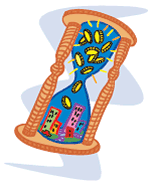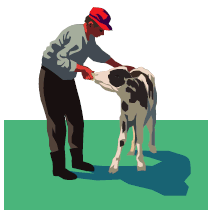

To send a message to an author, click on the author's name at the end of the article.
This Month in Ag Connection | Ag Connection - Other Issues Online
Emerald ash borer (EAB) is taking its place along with a few other insect pests to become an negative icon of American lore. A couple of other infamous icon pests include the boll weevil. They so affected southern US culture attacking cotton it has a monument in Alabama. Mormon crickets were destroying Mormon settlers’ first crop in Utah when sea gulls arrived to eat the pests and were honored with their monument. If EAB is to get a statue or monument, remains to be seen. The new aspect of this pest is the destruction of ash trees and its impact on everyone but especially American Indians culture and traditions.

Missouri had a bad EAB year with continued expansion from the first infestation in Wayne County. It was not a big or devastating increase but pointed out the difficulty of eradicating this pest. Other infested ash trees were found in the Kansas City area. EAB has killed tens of millions of ash trees across 18 states since it was first identified in 2002. It already has had a big impact on tribes and American Indian communities in Midwestern states.
American Indian artisans use the ash for making baskets, lacrosse sticks, pipe stems and flutes. There are also traditional medicinal remedies made from ash. The ash tree is a central figure in some traditional and religious stories told by several American Indian tribes. As an example, the Ponca tribe used green ash wood for their sacred Sun Dance poles.
Tribes like the Abnaki, Malecite, Mezkwaki, Mohawk, Ojibwa, Penobscot, Potawatomi, Wabanaki and others use black ash for baskets. EAB infestation damage is making it harder for weavers to find healthy trees suitable for basket weaving. Good basket tree scarcity threatens this cultural tradition and source of economic support.
Some of the most beautiful American Indian pipe stems and flutes are carved from black ash. Pipes and flutes are often used for ceremonies and special events. Again, EAB threatens this tradition and economic support by decreasing the availability of ash trees used for pipe stems and flutes.
Eastern US tribes use different parts of ash trees to make medicinal cures. Some tribes use ash sap to treat external skin growths. Other tribes value an extract of ash leaves as an antiseptic for use after childbirth. Some tribes use a tea made from ash bark to treat itching scalp and sores. Ash seeds are used as an aphrodisiac, diuretic, appetite stimulant, and remedy for fevers. EAB threatens traditional medicines and the possible source of future medicinal uses. Maybe more ceremonial than medicinal, Iroquois men would chew ash bark as part theirhunting ritual.
Lacrosse is a game with ceremonial origins to bring tribes and families together. Traditionally, lacrosse sticks are made from ash.

Members of American Indian tribes and communities are working to preserve the ash trees, especially black and green ash, from EAB. One of the most important things for everyone is to not move ash firewood. Movement of fire wood is the biggest threat to the rapid spread of EAB. Firewood moved into Missouri was the most likely way EAB infested ash trees at a Wayne County camp site.
Infested states have a state wide bans on firewood movement. Moving ash firewood is quarantined from Carter, Iron, Madison, Reynolds and Shannon counties in southeast Missouri and Clay and Platte counties near Kansas City to prevent the accidental spread of the beetle. The quarantine regulates the interstate (between states) movement of potentially-contaminated wood products, as well as movement, intrastate (within the state), between these counties and other Counties within Missouri. The quarantine of EAB-host wood and wood products from Wayne County includes: Ash nursery stock; Any part of an ash tree; including logs, green lumber, waste, compost, chips; and Firewood from any species of hardwood since specific wood identification may be difficult from processed or cut and split wood.
Source: Jim Jarman, Agronomy Specialist & several excellent websites including:
This Month in Ag Connection | Ag Connection - Other Issues Online
The Internal Revenue Service announced it will issue guidance in the near future to provide relief from the estimated tax penalty for farmers unable to file and pay their 2012 taxes by the March 1 deadline due to the delayed start for filing tax returns. Some of the tax forms and schedules needed to complete farm tax returns may not be available from the IRS in time to meet the March 1st filing requirements.

The relief applies to all farmers, not only those who must file late released forms. Normally, farmers who choose not to make quarterly estimated tax payments are not subject to a penalty if they file their returns and pay the full amount of tax due by March 1. Under the guidance to be issued, farmers who miss the March 1 deadline will not be subject to the penalty if they file and pay by April 15, 2013. A taxpayer qualifies as a farmer for tax-year 2012 if at least two-thirds of the taxpayer’s total gross income was from farming in either 2011 or 2012.
Farmers requesting this penalty waiver must attach Form 2210-F to their tax return. The form can be submitted electronically or on paper. The taxpayer’s name and identifying number should be entered at the top of the form, the waiver box (Part I, Box A) should be checked, and the rest of the form should be left blank. Forms, instructions, and other tax assistance are available on IRS.gov. IRS IR-2013-7
Source: Parman R. Green, CPA, Ag Business Mgmt. Specialist
This Month in Ag Connection | Ag Connection - Other Issues Online
Calving season is here and inevitably there will be calves needing an extra "boost" of nutrition for various reasons; maybe the cow had twins and she doesn’t have enough milk for both calves, maybe the cow died during birth, maybe she didn’t claim the calf, etc. The reason doesn’t matter, producers still need a supply of good milk replacer on hand. So how does one go about picking a good one with so many options? The Bovine Alliance on Management and Nutrition has put together a guide sheet that producers can access online called, "A guide to calf milk replacers, types, use and quality." When fed properly, high quality milk replacers will allow calf growth and performance equal to even greater than that attainable with whole milk.

Producers can compare milk replacers by looking at the crude fiber content in the product, easily found on the label. According to Dr. Scott Poock, MU State Extension Veterinarian, producers need to stay away from milk replacers with more than 0.25% crude fiber. "When crude fiber gets too high (greater than 0.25%), the calf does not have the ability to digest the milk replacer as it should. So bottom line is, whether the milk replacer is all milk or not, if crude fiber is 0.15%, the calf can digest the milk replacer as it should." Most of the products with 0.15% crude fiber are from milk based products (i.e. skim milk, dried whey) instead of plant based products (i.e. soy protein, wheat gluten). He has seen crude fiber content as high as 0.5% in some milk replacers, which were literally starving the calf, so before purchasing any milk replacer, look at the label first!
Fiber is basically "fill" and although it is needed, when there is a high level in a die, the calf isn’t getting the nutrition they need to survive and grow. They might feel "full" but are not getting the nutrition they need. Think about eating celery, eating celery might make a person feel full when someone eats a lot of it, but if a person tried living off of it alone, they would starve to death.
There are huge price differences, which are usually dependent on the quality of the milk replacer (cheaper is not better) and it is important that producers understand these differences and make informed decisions to maximize both calf performance and economic benefit. Protein levels for example, can range from 18% to 30% and fat levels from 10% to 28%. Protein sources can be plant or animal based (soy verses milk protein) and fat, being the most concentrated energy source, needs to be highly digestible and preserved with an antioxidant, so it doesn’t go bad. According to Dr. Poock, milk replacers with higher protein levels (greater than 22%) are products fed at 1.5 pound per head per day or more.
"A Guide to Calf Milk Replacers, Types, Use and Quality" for your reference, can be found online at:
http://www.aphis.usda.gov/animal_health/nahms/dairy/downloads/bamn/BAMN08_GuideMilkRepl.pdf
Source: Wendy Rapp,Livestock Specialist
This Month in Ag Connection | Ag Connection - Other Issues Online
Is your private pesticide applicator license expiring? Farmers and ranchers who use restricted use pesticides in their operations need to have a license to purchase those products. Private Pesticide Applicator Training (PPAT) must be taken for producers whose license is expiring or for those needing a license for the first time.

If you engage in the application of a restricted-use pesticide for the purposes of producing an agricultural commodity on property you or your employer owns, or rent without compensation other than trading of personal services between producers of agricultural commodities you are considered a private applicator.
There is a requirement that producers must have the M87 "Private Pesticide Applicator Reference Manual" in their possession for the training. Producers who have a copy of the manual can bring it to the class, and they will not need to purchase a new one. Others will need to purchase the $12 manual.
Contact your local Extension Center for more information on how to renew or get a private pesticide applicators license.
Source: Joni Harper, Agronomy Specialist
This Month in Ag Connection | Ag Connection - Other Issues Online


Capital Plaza Hotel - 415 W. McCarty- Jefferson City, MO
8:30am - 3:30pm
Teddy Gentry of the legendary county music band Alabama & Bent Tree Farms
"My experiences in the Beef Cattle Industry: Grazing Systems, Breeding Systems and Composite Breed Development"
Central Missouri Producer Panel
"How We Managed Our Grazing Systems During the 2012 Drought and What We’ll Change for 2013"
Come see the Trade Show beginning at 8:00 a.m.
- Pasture Renovation
- Management Intensive Grazing 101
- Genetics for Feed Efficiency
- Pasture Weed and Brush Control
- Native Grasses 101
- Alternative Forages
- Re-stocking Economics
- Cover Crops
Advanced registration by Feb. 22nd, 2013: $50.00 individual, $85 couple or $25 student
Late/Door Registration: $85 individual, $120 couple or $35 student
Includes: Meal, Refreshments & Proceedings
To Register, Send check to: Cole County SWCD, 1911 Boggs Creek Rd, Jefferson City, MO 65101
For more information: Ed Gillmore or Peggy Lemons at 573-893-5188 ext. 3
This Month in Ag Connection | Ag Connection - Other Issues Online
Publishing Information
Ag Connection is published monthly for Northeast and Central areas of Missouri producers and is supported by the University of Missouri Extension, the Missouri Agricultural Experiment Station, and the MU College of Agriculture, Food and Natural Resources. Managing Editor: Mary Sobba.